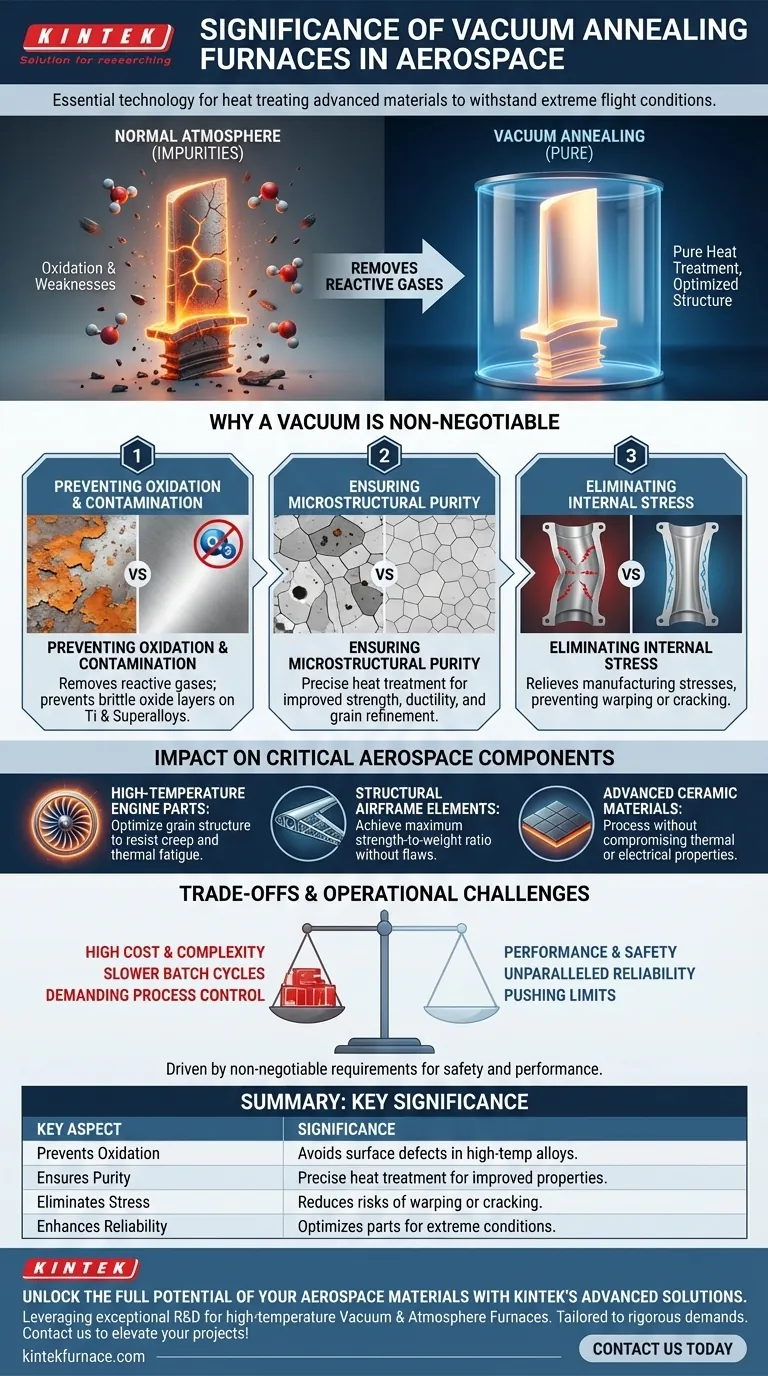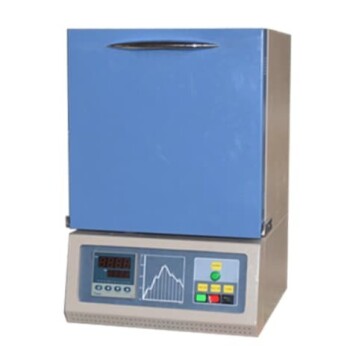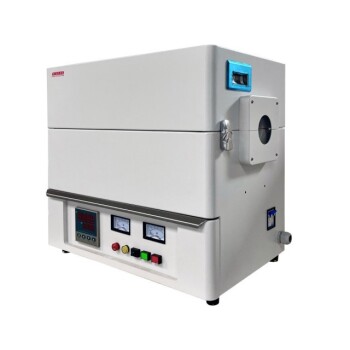In aerospace, the significance of vacuum annealing furnaces is profound: they are the essential technology used to heat treat advanced materials, ensuring components can withstand the extreme temperatures and stresses of flight. This process directly enhances the mechanical properties, reliability, and service life of critical parts like turbine blades and structural elements by refining their internal microstructure in a controlled, contamination-free environment.
At its core, the challenge is that the very act of heating advanced aerospace alloys in a normal atmosphere can introduce impurities and weaknesses. Vacuum annealing solves this by removing reactive gases, enabling a pure heat treatment that optimizes the material's structure for unparalleled strength and reliability.
Why a Vacuum is Non-Negotiable for Aerospace Materials
The use of a vacuum is not an incidental detail; it is the central requirement for successfully processing the high-performance materials used in modern aircraft and spacecraft. Traditional atmospheric furnaces are simply not viable for these applications.
Preventing Oxidation and Contamination
At the high temperatures required for annealing, metals like titanium and nickel-based superalloys are highly reactive with oxygen and other gases in the air. This reaction, oxidation, forms a brittle oxide layer on the surface that can compromise the component's integrity and lead to premature failure.
A vacuum environment removes these reactive gases, preventing oxidation and ensuring the material's surface remains pure and free of defects.
Ensuring Microstructural Purity
Annealing is a precise metallurgical process designed to alter a material's internal crystal structure, known as its microstructure. The goal is often to relieve stress, increase ductility, or refine the grain size for improved strength.
Atmospheric contaminants can interfere with these structural changes, leading to unpredictable and substandard material properties. The vacuum guarantees that the only variable is heat, allowing for precise and repeatable results that meet strict aerospace specifications.
Eliminating Internal Stress
Manufacturing processes like forging, machining, or welding introduce significant internal stresses into metal components. If left untreated, this stored stress can lead to warping or cracking during service.
Annealing relieves this stress by allowing the material's crystal lattice to relax and reform into a more stable state. Performing this in a vacuum prevents the formation of new stresses or surface defects during the heating and cooling cycle.
The Impact on Critical Aerospace Components
The benefits of vacuum annealing are directly realized in the performance and safety of the most demanding aerospace parts.
High-Temperature Engine Parts
Components in the "hot section" of a jet engine, such as turbine blades and combustor cans, are made from high-temperature superalloys. Vacuum annealing is critical for optimizing their grain structure to resist creep (deformation under long-term heat and stress) and thermal fatigue.
Structural Airframe Elements
Key structural components in the airframe demand an exceptional strength-to-weight ratio. Vacuum annealing ensures that these parts achieve their maximum potential strength without the microscopic flaws that could become points of failure under the immense loads of flight.
Advanced Ceramic Materials
Aerospace also utilizes advanced ceramics for applications like heat shields and sensor components. These materials are extremely sensitive to atmospheric impurities during heat treatment. A vacuum furnace provides the inert environment necessary to process them without compromising their unique thermal or electrical properties.
Understanding the Trade-offs
While indispensable, vacuum annealing technology comes with a specific set of operational challenges and costs.
High Initial Cost and Complexity
Vacuum furnaces are significantly more expensive to build and maintain than their atmospheric counterparts. The systems required to create and hold a high vacuum, along with the sophisticated controls, represent a major capital investment.
Slower Processing Cycles
Achieving a deep vacuum, running the heating cycle, and then safely cooling the parts all take a considerable amount of time. This makes vacuum annealing a batch process with lower throughput compared to some continuous atmospheric furnace designs.
Demanding Process Control
The process is not one-size-fits-all. Each alloy and component geometry requires a unique and highly specific "recipe" of temperature, time, and vacuum level. Developing and validating these recipes requires significant metallurgical expertise and rigorous process control.
Making the Right Choice for Your Goal
The decision to use vacuum annealing in aerospace is driven by non-negotiable requirements for performance and safety.
- If your primary focus is component reliability and safety: Vacuum annealing is the gold standard for eliminating hidden material defects and ensuring predictable performance under extreme stress.
- If your primary focus is pushing performance limits: This process unlocks the full potential of advanced superalloys and composites, enabling lighter, stronger, and more heat-resistant designs.
- If your primary focus is manufacturing and cost: View the high cost of vacuum annealing as a required investment to prevent catastrophic component failure and meet the stringent quality standards inherent to the aerospace industry.
Ultimately, vacuum annealing is not just another manufacturing step; it is a foundational technology that underpins the safety and performance of modern aviation and space exploration.
Summary Table:
| Key Aspect | Significance |
|---|---|
| Prevents Oxidation | Removes reactive gases to avoid surface defects in high-temperature alloys like titanium and superalloys. |
| Ensures Microstructural Purity | Allows precise heat treatment for improved strength, ductility, and grain refinement without contamination. |
| Eliminates Internal Stress | Relieves stresses from manufacturing, reducing risks of warping or cracking in critical components. |
| Enhances Component Reliability | Optimizes properties of turbine blades, structural elements, and ceramics for extreme aerospace conditions. |
Unlock the full potential of your aerospace materials with KINTEK's advanced vacuum annealing solutions. Leveraging exceptional R&D and in-house manufacturing, we provide high-temperature furnaces like Vacuum & Atmosphere Furnaces, tailored to meet the rigorous demands of aerospace components. Our deep customization capabilities ensure precise alignment with your unique experimental needs, enhancing reliability and performance. Contact us today to discuss how our expertise can elevate your projects!
Visual Guide

Related Products
- Vacuum Heat Treat Furnace with Ceramic Fiber Liner
- Vacuum Heat Treat Sintering Furnace Molybdenum Wire Vacuum Sintering Furnace
- 9MPa Air Pressure Vacuum Heat Treat and Sintering Furnace
- Vacuum Heat Treat Sintering and Brazing Furnace
- 1700℃ Controlled Inert Nitrogen Atmosphere Furnace
People Also Ask
- Where are vacuum furnaces used? Critical Applications in Aerospace, Medical, and Electronics
- What are the common applications of continuous vacuum furnaces in metal heat treatment? Boost Efficiency and Quality in High-Volume Production
- How does vacuum heat treatment improve mechanical properties of metals? Enhance Strength and Durability
- How do custom vacuum furnaces address industry-specific challenges? Tailored Solutions for Aerospace, Medical & Energy
- What does a vacuum furnace do? Achieve Superior Material Processing in a Pure Environment



















